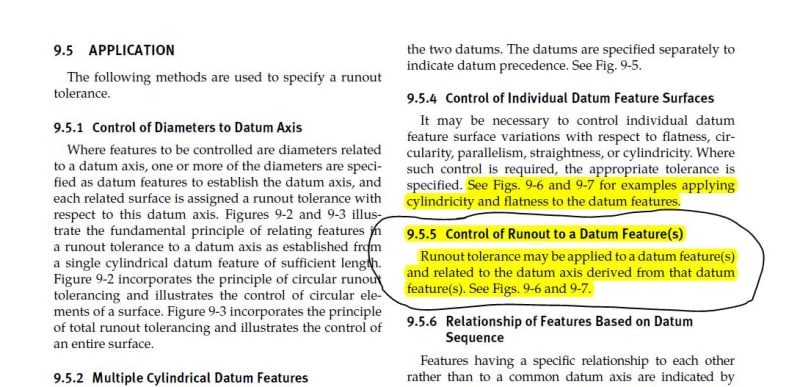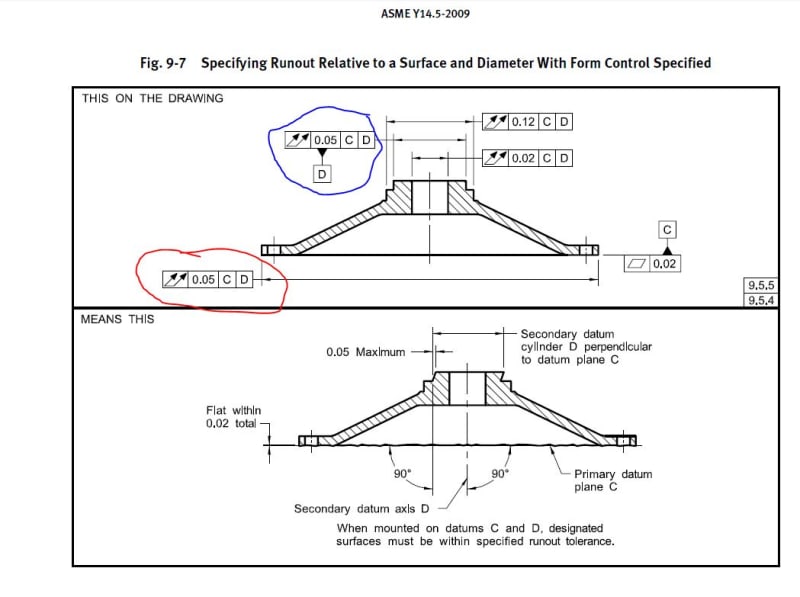sendithard
Industrial
I'm not sure I'll ever understand this one... how can you measure a runout from yourself? Since runout doesn't capture the highs like position does...wouldn't runout to itself equal zero for that perscribed datum requirement?
I understand the red circled callout, but I don't understand the blue circled callout.
How do you measure the same surface that is used to capture the surface used to measure against? ie....datum D
Or is this callout saying capture the plane C then find a single point of touch on the diamter D and let that assume the high point...then rotate the part and see how the total indicator moves


I understand the red circled callout, but I don't understand the blue circled callout.
How do you measure the same surface that is used to capture the surface used to measure against? ie....datum D
Or is this callout saying capture the plane C then find a single point of touch on the diamter D and let that assume the high point...then rotate the part and see how the total indicator moves


